“There’ll Always be a Dustbin…”
A Look at Salvage and Recycling on the Home Front
When I was invited to write the Home Front Girls series, I gave a lot of thought to its background. I settled on salvage – what we today know as recycling – because it played such a huge part in the nation’s ordinary everyday life.
Salvage was a massive part of the war effort on the home front. Everything was in increasingly short supply as items vanished from the shops, never to be seen again until after the war – ordinary things like hair-pins, paper-clips (a bag of paper-clips was once offered as a prize in a raffle), hair-pins, needles, pencils, coat-hooks… | 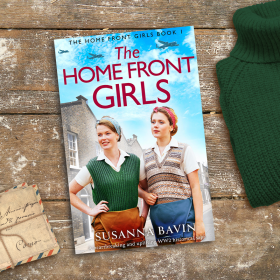 |
During the war, re-using was essential. Many items were re-directed into another purpose. Three or four layers of wool fabric for the soles, with a piece of old curtain, tapestry or even old carpet for the tops, and hey presto – a pair of slippers. The shirt-tails could be cut off a man’s shirt and made into a new collar and cuffs when the old ones wore out. Old shirts and blouses were turned into baby-clothes, and many a blanket found a new life as a winter coat. The WVS (Women’s Voluntary Service) ran clothes exchanges, where you could choose something ‘new’ in return for a good-quality donation. Women’s magazines were full of clever ideas for giving clothes a new lease of life, such as turning a full-length coat that was past its best into a hip-length coat and using the left-over fabric to make a smart new collar and pocket-flaps.
But it wasn’t just in the home that salvage and recycling worked wonders. ‘Saucepans into Spitfires’ was the popular and inspirational slogan for a national drive to collect aluminium throughout the summer of 1940, when the Battle of Britain was being fought in the skies. The housewives of Britain proudly gave up their pots and pans, vacuum-cleaner tubes, coat-hanger hooks, and anything else metallic they could find around the house.
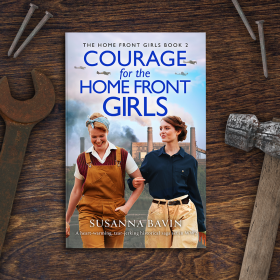 | In the words of Lady Reading, the leader of the WVS, speaking to women in a wireless broadcast in July 1940, ‘Very few of us can be heroines on the battle-front, but we can all have the tiny thrill of thinking as we hear the news of an epic battle in the air, “Perhaps it was my saucepan that made part of that Hurricane!”’ |
Throughout the war, everything was salvaged – paper, string, metal, glass, rubber, rags, wood, even rabbit fur after Bunny had been killed for the cooking pot, often to appear on the Christmas dinner table as mock-turkey. Food-waste went into the pig-bin, except for the bones, which went in the bone-basket to end up as glue, explosives, soap, fertiliser and animal-feed. Silver-foil milk-bottletops were kept and given back to the milkman – or more likely to the milk-lady, who had taken over the job when the milkman was called up.
The Control of Paper Order 1940 stated that items bought in a shop should not be packed or wrapped if this wasn’t necessary. In the spring of 1943, it became an offence to throw away waste paper. At a time when few people had a telephone at home, the main way to keep in touch was by letter. Envelopes were re-used until there was no space left to write another address and people who had been brought up to write on only one side of the paper now wrote on both, with no margins. If young Billy had been off sick from school and his mother, or his foster mother if he was an evacuee, had to write a note to the teacher to excuse his absence, this was probably done on the reverse of a piece of paper that had already been written on – so it was probably a good idea to check what had been written on the other side, just in case.
A salvaged newspaper could be made into three 25-pound shell cups. One envelope could become a cartridge wad. A mortar shell carrier could be made from half a dozen books, while sixty large cigarette cartons could be turned into the outer container for a shell. One 9-inch enamel saucepan might become a bayonet. Even the ‘snippings’ of cotton or wool from a housewife’s sewing or knitting could end up forming part of a soldier’s winter coat or an army blanket. | 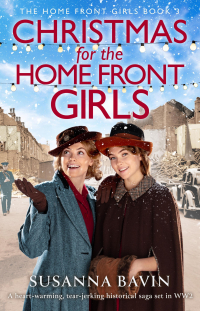 |
As for the humble rag… maps and charts for submarines, bomber crews and tank crews; wipes for cleaning machinery; battle-dress; blankets; roofing-felt for army barracks.
The responsibility for the collection of salvage lay officially with the local corporations, but the work mainly became the job of local women, almost always the Women’s Voluntary Service. This was partly because in the early years of the war, corporation refuse-carts were often needed for clearing up the rubble after air raids.
Salvage also became a job for children. Hundreds of thousands of children joined the ‘cog’ scheme – each of them becoming a small cog in the mighty war machine. Schools, scout groups, guides and brownies competed with one another to collect the most salvage in their local neighbourhoods. Newspapers ran a ‘cog’ page each week for children and a special song was written called ‘There’ll Always Be a Dustbin’, which was sung to the tune of ‘There’ll Always Be an England’. Working towards earning their ‘cog’ badges was an important part of wartime life for many youngsters.
So the next time you’re sorting your recycling, preparing to put it out for collection in the various boxes, spare a thought for our salvage-minded wartime generation, who by the time D-Day came round had provided 1.1 million tons of waste paper, 1.3 tons of metal and more than 80,000 tons of rags to help fight the Second World War.
* * * *
Link to The Home Front Girls series on Amazon.
Books 1 & 2 (The Home Front Girls and Courage for the Home Front Girls) are available on Kindle and Kindle Unlimited and in paperback.
Book 3 (Christmas for the Home Front Girls) will be published on September 30th. It can be pre-ordered now.
Books 4 & 5 will be published in 2025.
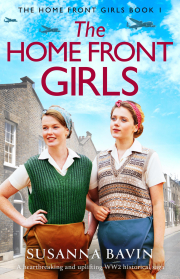 | 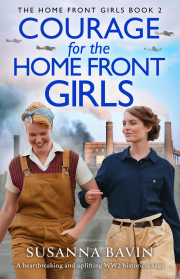 | 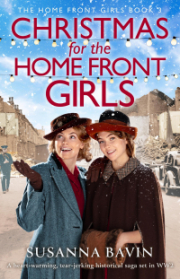 |


Make A Comment
Comments (0)